The 10 Senate seats most likely to flip in 2024
Senate primaries are only just beginning, but the matchups in key races that will determine the balance of power in the chamber look relatively settled seven months before the November election.
At the dawn of the second fundraising quarter, the general election is effectively here, and that’s bringing several changes to our list of the top 10 Senate seats most likely to flip. Rankings are based on CNN’s reporting, fundraising figures and historical data about how states and candidates have performed.
Of these 10 seats, only Ohio and Texas have held primaries so far. Nominating contests between April and August will cement what the other races look like.
The top three races on the list – West Virginia, Montana and Ohio – aren’t going anywhere. They’re still the most likely to flip because they’re Democratic-held seats in states that twice backed Donald Trump. In fact, West Virginia Sen. Joe Manchin’s decision not to run for reelection has essentially handed the seat to Republicans, who need just one or two seats to flip the Senate, depending on who wins the White House this fall.
The presidential race has also settled into a general election tempo. While we’re not done with this year’s presidential nominating contests, both Trump and President Joe Biden have already secured enough delegates to become their respective parties’ presumptive nominees.
The changes in the latest Senate rankings come in the next tier of races, which are presidential battleground states that Biden narrowly won over Trump four years ago and that are likely to see a close race again this year. Wall Street Journal polling released Wednesday, for example, showed no clear leader in Nevada, Pennsylvania, Michigan and Wisconsin, while Trump held a slight lead in Arizona. Republicans have a decent shot at flipping these Senate seats, but it’s nowhere near as strong as their chances of winning the first three states on the list.
Pennsylvania – which had long been at No. 4 because it was the rare GOP-targeted seat that didn’t have a competitive Republican primary – drops down to No. 6. Democratic Sen. Bob Casey and Republican challenger Dave McCormick are unopposed in their primaries, but given how settled the other races have also become, they’re no longer the only candidates waging a general election fight this early. Moreover, there’s not enough data at this point that shows Casey in graver danger than other swing-state Democrats, although that could change.
With Pennsylvania’s move, Nevada jumps up two spots. Further down the list, Michigan moves above Wisconsin despite Biden having carried Michigan by a healthier margin in 2020. The president’s campaign received warnings in the form of protest votes from Democratic primary participants in both states this spring over his handling of Israel’s war against Hamas. It’s too early to say whether those voters will come out for Biden this fall, but it ups the imperative for Democratic Senate candidates to drive enthusiasm for their campaigns. Recent Republican primaries have also offered warning signs for Trump about his ability to consolidate party support.
While the Senate map favors the GOP, Democrats contend that their candidates – many of whom are battle-tested incumbents – are well positioned to overperform Biden, especially now that general election contrasts are emerging. Republicans have worked to recruit candidates who can at least partially fund their own races, but their business backgrounds and some out-of-state connections have given Democrats plenty of early ammunition.
Republicans get a win this month, however, with the biggest shake-up to the list. Maryland makes an appearance for the first time, sliding in just above Texas. That means nine of the top 10 seats likely to flip are currently held by Democrats (or, in the case of Arizona, an independent who caucuses with Democrats).
No one expected Maryland to be in play three months ago, but former Gov. Larry Hogan’s February entrance gave the race a jolt. It would take a lot for such a blue state to elect a Republican senator – something Maryland hasn’t done since 1980. And former governors don’t have the best track record at winning federal races in home states that trend in the opposite partisan direction. So it’s very possible the race won’t stay on the rankings for long. But since this list is a snapshot in time, capturing what is likely to happen were the election held today, Maryland’s appearance reflects Hogan’s unique ability to make the race competitive.
With the addition of Maryland, Florida falls off the rankings. That may come as a surprise given this week’s state Supreme Court rulings that cleared the way for a six-week abortion ban to take effect next month and for an abortion rights amendment to appear on the ballot this fall. Democratic former Rep. Debbie Mucarsel-Powell’s campaign called the twin rulings a “game changer” in her challenge to GOP Sen. Rick Scott, while Biden’s campaign argued that Florida – which Trump won by 1 point in 2016 and then 3 points in 2020 – is in play.
There’s little doubt that an abortion-related ballot measure will energize Democratic voters in ways that we’ve seen across the country since the toppling of Roe v. Wade some two years ago. But there’s no concrete evidence yet of that translating into victory for Mucarsel-Powell. Although Scott – a former two-term governor who’s never won election by more than about a point – has plenty of vulnerabilities, he still has the advantage of being a wealthy incumbent in a red-trending state.
But again, this is reflective of the dynamics of the moment – Florida may well return to the list soon. We’ll check back in on the race the next time the rankings are updated.
1. West Virginia
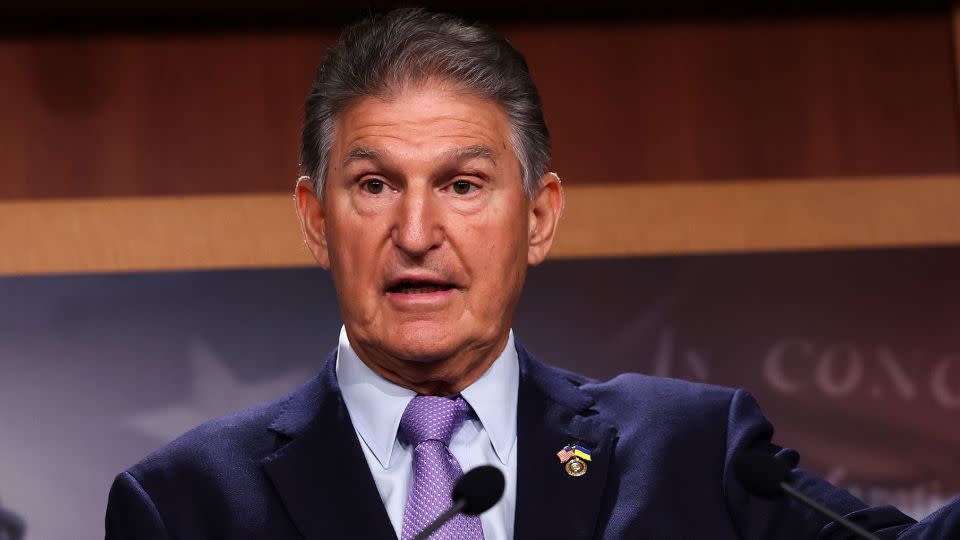
There’s very little that could knock West Virginia off the top of this list before November. Even if Sen. Joe Manchin made a late entry into the race as an independent, it’d be difficult for him to win a third full term against a Trump-endorsed candidate in a state the former president twice carried by wide margins. CNN’s Manu Raju reported last month that Senate Majority Leader Chuck Schumer had a conversation with Manchin about a potential independent run, and while the West Virginia Democrat wouldn’t completely rule it out, he called it a “a long, long, long-shot scenario.”
The big name now running on the Democratic side is former energy executive Don Blankenship, who was convicted of conspiring to violate mine safety standards after the 2010 explosion at the Upper Big Branch mine that killed 29 workers. Blankenship sought the seat in 2018, finishing third in the GOP primary, and then ran for president in 2020 under the Constitution Party banner. Manchin suggested he’d be looking to see whether Blankenship receives the Democratic nod before reconsidering.
On the Republican side, Gov. Jim Justice, a former Democrat, is the front-runner for the nomination, given his support from Trump and his statewide profile. He faces US Rep. Alex Mooney, a member of the hard-line Freedom Caucus, in the May 14 primary.
2. Montana
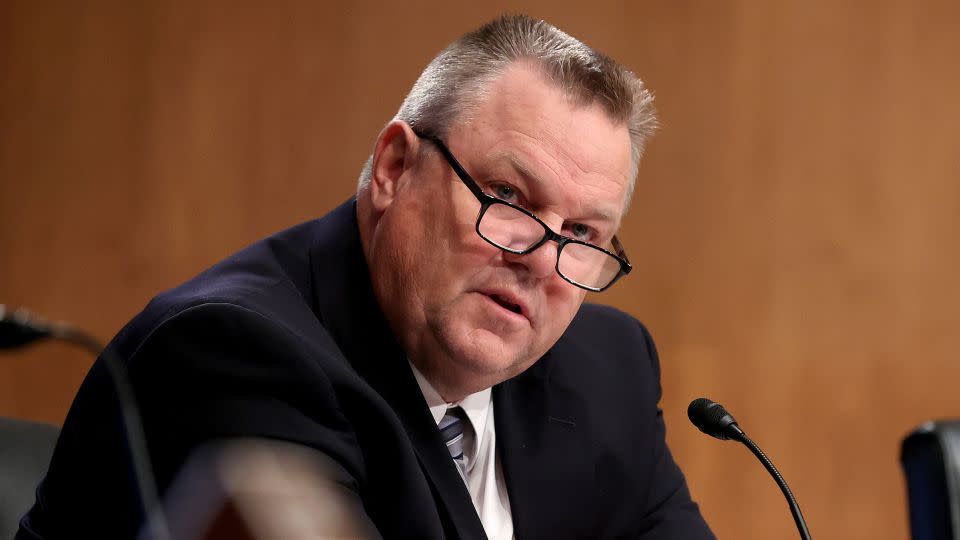
As a Democrat in a state Trump twice carried by double digits, Jon Tester is the most vulnerable senator running for reelection. His matchup against Republican Tim Sheehy was all but set earlier this year after Trump endorsed the retired Navy SEAL and US Rep. Matt Rosendale ended his dayslong primary campaign against the national party’s preferred candidate.
Sheehy has been airing ads that show him at the southern border, not uncommon among GOP candidates running in states hundreds of miles from Mexico. In a recent 60-second spot, Sheehy leans into his military service to draw a contrast with “career politicians,” while noting that his successful business career means he doesn’t need money from lobbyists. The ad very prominently shows him driving a white pickup truck with the name of his cattle ranch written on the side.
Democrats are trying to poke holes in that image, highlighting questions about Sheehy’s ranching credentials and his ties to the state – two lines of attack that they successfully used against the Maryland-born Rosendale when he lost to Tester six years ago. Tester, a dirt farmer, is running ads touting his third-generation roots in the state and calling out “wealthy outsiders.”
Painting a strong contrast between Sheehy and Tester is an important part of Democrats’ strategy for holding this seat, which once again largely depends on the senator’s personal brand defying the state’s partisan lean. Republicans are taking the opposite approach as they try to nationalize the race. For example, one National Republican Senatorial Committee ad that hits Tester over the border ends with a clip of him saying, “I’m endorsing Joe Biden for president.”
3. Ohio

With Bernie Moreno winning the GOP nod last month, Democrats got the matchup they were looking for after spending to boost him in the three-way Republican primary. But that doesn’t change this race’s position on the list. Sen. Sherrod Brown remains highly vulnerable as the only other Senate Democrat besides Tester running for reelection in a Trump state.
Like his Montana colleague, the Ohio senator is a three-term incumbent with a well-known state brand – in Brown’s case, as a progressive populist – that has helped him win crossover voters in a Republican-leaning state. Ticket-splitting may be harder this year with Trump also on the ballot. But Democrats see the noncompetitiveness of the presidential contest in Ohio as an advantage that could allow the Senate race to dominate messaging.
Brown’s ads lean into his legislative work, on burn pits, for example. But his spots also promote his past work with Trump – a recent ad features law enforcement officers touting Brown’s sponsorship of legislation targeting illegal drug smuggling that was signed by Trump.
Moreno, a Cleveland businessman who tethered himself during the primary to Trump and his rhetoric about a stolen election, was singing a slightly different tune after becoming the GOP nominee. He refused to say if he believed the 2020 election was stolen when CNN caught up with him in the Capitol late last month. The Democratic Senatorial Campaign Committee quickly went up with a digital ad after Moreno’s primary win that used the words of his Republican rivals to attack him. And Democrats are already hammering him over abortion after he opposed last year’s ballot measure approved by 57% of Ohio voters that enshrined abortion rights in the state constitution. Democrats argue that Moreno’s support for a national ban on most abortions at 15 weeks suggests he wants to overturn the will of Ohio voters.
After an ugly primary, Moreno ended the pre-primary reporting period on February 28 with significantly less cash than Brown – $2.6 million to the senator’s $13.5 million. Brown’s campaign announced raising more than $12 million in the first quarter of 2024. But Moreno, who poured millions of dollars of his own money into his primary campaign, likely has more where that came from.
4. Nevada
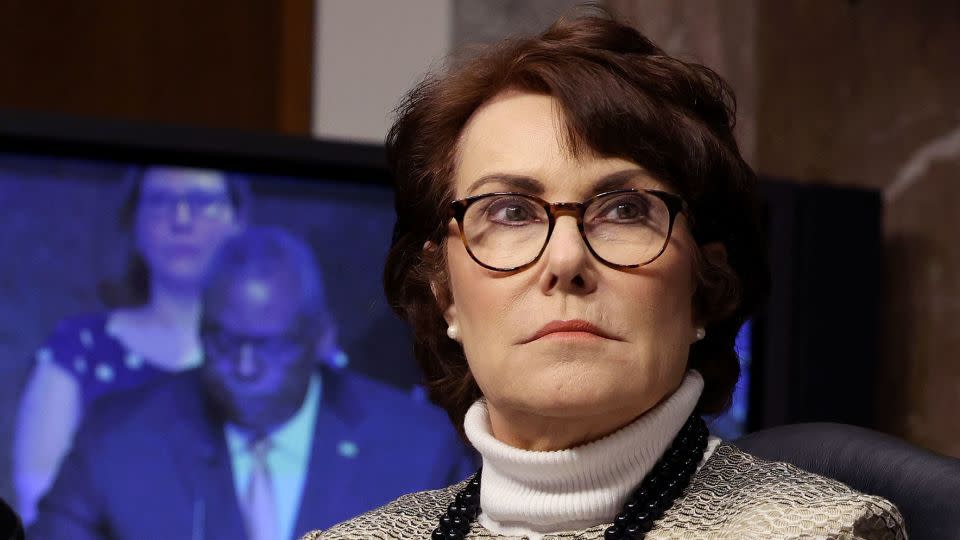
Nevada climbs up the rankings, a reflection that despite voting for Biden by a bigger margin than other states on this list, Nevada is not moving in Democrats’ favor demographically. The state’s relatively low percentage of college-educated voters, for example, could make the Senate seat harder to hold than past presidential performance would suggest.
Democratic Sen. Jacky Rosen has the advantage of incumbency, but the first-term senator has to differentiate herself from the top of the ticket. “I won’t walk the party line, and I never have,” she says in her first ad, which is running in English and Spanish and touts her work on burn pit legislation and border security. Rosen’s campaign announced a $14 million ad reservation this week, billing it as the largest reservation in state history for a Senate race.
Democrats recognize the challenge – Nevada was one of two states where the Democratic super PAC Senate Majority PAC first laid down ad reservations. Biden carried the state by 2 points in 2020, but the state’s senior senator, Democrat Catherine Cortez Masto, won reelection by less than a point two years later.
Rosen is likely to face Republican Sam Brown, although the Army veteran still faces a crowded June primary. (Jeff Gunter, a former US ambassador to Iceland under Trump, announced that his campaign will be launching a $3.3 million advertising campaign as he bids to stop Brown.) Brown is making his second Senate bid in two years, but unlike Kari Lake in Arizona, he doesn’t have experience running a statewide campaign since his previous Senate attempt ended in the primary. His campaign told Fox News Digital it had raised $2.2 million in the first quarter of the year.
In a state where the issue of abortion rights resonates, Brown has attempted to moderate his message. In an NBC News interview in February, during which he and his wife, Amy, revealed her story of having an abortion when she was 24 and single, Brown said that he’d “close the door” on backing a national ban and that it should be a state issue. He also said he supports the Nevada law that allows abortions up to 24 weeks. But as in other states, Democrats will attempt to nationalize the issue, including pointing to Brown’s own past statements, as they seek to tie him to the GOP’s most restrictive positions.
5. Arizona
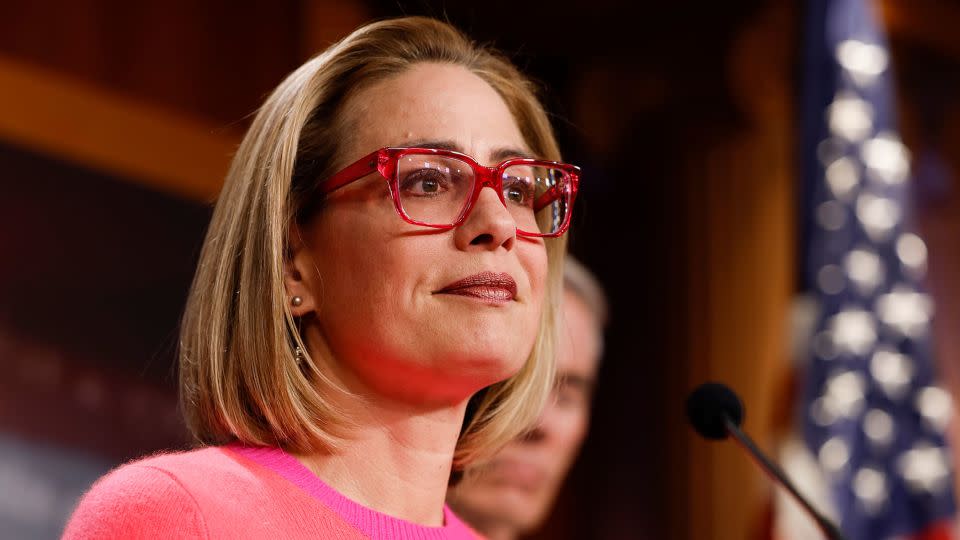
Sen. Kyrsten Sinema’s announcement last month that she won’t run for reelection has turned this contest into a two-way race likely between Democratic Rep. Ruben Gallego and Republican Kari Lake. (Both face minimal opposition in the July primary.)
Sinema’s departure was a relief for Republicans, who feared the independent, who still caucuses with Democrats in the Senate, would split GOP voters. But despite securing the backing of party leaders, Lake hasn’t exactly abandoned her rhetoric about “rigged” elections. After embracing Trump’s 2020 election lies during her gubernatorial run two years ago, she went on to question the integrity of her own result – an issue she hasn’t let go of in the time since. She’s made it an integral part of her public persona, through litigation over the 2022 election and as a surrogate for Trump out of state.
But Lake’s strongest advantage is that she’s well known in this state, which nearly elected her two years ago and still leans red. Trump, for instance, led Biden 47% to 42% among registered Arizona voters in the Wall Street Journal poll.
Republicans argue that Gallego’s background as a progressive congressman puts him to the left of the state, which Biden flipped by less than half a point in 2020. The Marine veteran has an advertising advantage – he’s been on TV introducing himself statewide while Lake has been off the air. His campaign announced this week that it had raised more than $7.5 million in the first quarter of the year – more than double his final quarterly haul of 2023 – and it started April with $9.6 million in the bank. Lake has demonstrated the ability to raise money, but she hasn’t released her first-quarter numbers as yet. She raised $1 million at a Mar-a-Lago fundraiser Wednesday night, a source familiar with the event told CNN’s Kristen Holmes.
6. Pennsylvania
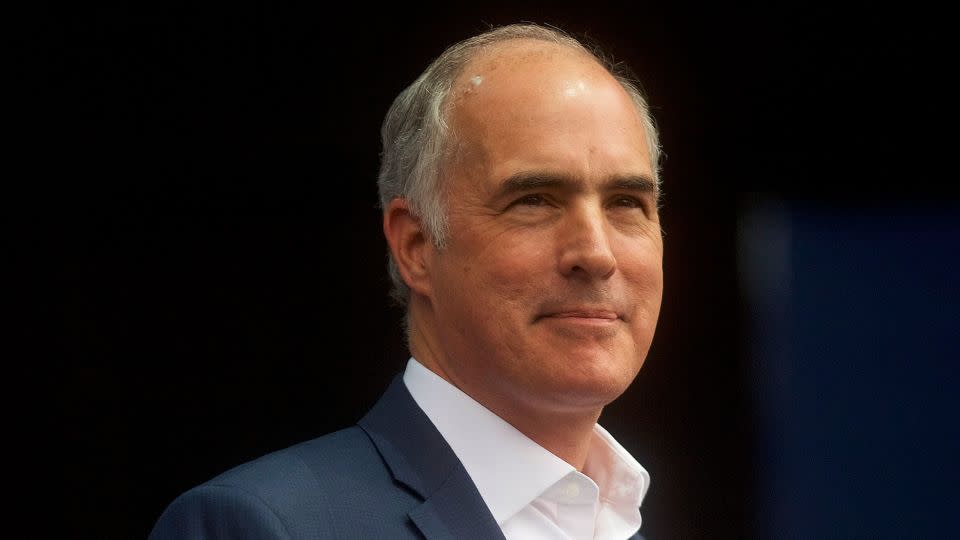
The race in Pennsylvania, where Democratic Sen. Bob Casey is running for a fourth term, is guaranteed to be close, but for now, it slides down the list of seats most likely to flip. Republican Dave McCormick – whose campaign announced raising $6.2 million in the first quarter, including $1 million in self-funding – has effectively been in a general election matchup against Casey since the former hedge fund executive launched his second Senate bid last fall. Casey’s campaign announced raising more than $5.6 million in the first fundraising period.
Casey has had an edge in public polling over the past few months. The presidential race also looks closer here than in other battleground states. The Wall Street Journal poll showed no clear leader as did a CNN survey last month. The CNN poll also found Casey viewed favorably by registered Pennsylvania voters, although 42% had no opinion. McCormick was largely unknown.
Democrats have hammered McCormick as an out-of-touch carpetbagger who lives in a Connecticut mansion. (McCormick flies to Connecticut to see his daughter, who is in school and lives with his ex-wife.) McCormick’s first ad – a coordinated spot launched with the NRSC in late March – plays up his Pennsylvania roots, specifically as a high school, and later West Point, wrestler. “Career politicians don’t do the hard work,” he says. “They’re selfish and soft.” His second ad touts his West Point attendance.
Casey’s first ad, also launched in late March, highlights his work to enact the PACT Act, which expanded health care benefits to millions of veterans who were exposed to toxic burn pits during their military service. Another new ad goes after what the senator dubs “greedflation,” trying to appeal to voters’ concerns about rising prices. With both candidates now on the air, we’ll be watching to see how the poll numbers in this race move over the next few months.
7. Michigan

A CNN poll in Michigan last month spelled out danger for Democrats in this presidential battleground – home to a sizable Arab and Muslim American population – that’s also hosting an open-seat Senate race. Trump led Biden 50% to 42% among registered voters, and Biden was notably trailing among independent and younger voters.
Other surveys have shown a closer race, but the warning signs for the White House are all the more reason for US Rep. Elissa Slotkin, the front-runner for the Democratic nod to succeed retiring Sen. Debbie Stabenow, to try to localize the race. Neither she nor Republican Mike Rogers, a former congressman who has the backing of both Trump and the NRSC, was well known to Michigan voters, the CNN poll found. Slotkin’s campaign said it raised $4.4 million in the first quarter of 2024 and is set to report $8.6 million on hand.
Both candidates still face August primaries, although the GOP side offers more excitement with its cast of familiar political characters. Former US Rep. Justin Amash, who left the GOP after saying Trump had committed impeachable offenses following the release of the Mueller report, recently entered the race. Former US Rep. Peter Meijer, who lost his primary after voting to impeach Trump in 2021, got into the race last fall despite discouragement from the national party. Rogers has his own history of criticizing the former president – and even contemplated seeking the White House this cycle – but now that he’s endorsed Trump and has Trump’s endorsement in return, he’s the clear front-runner for the GOP nomination.
8. Wisconsin
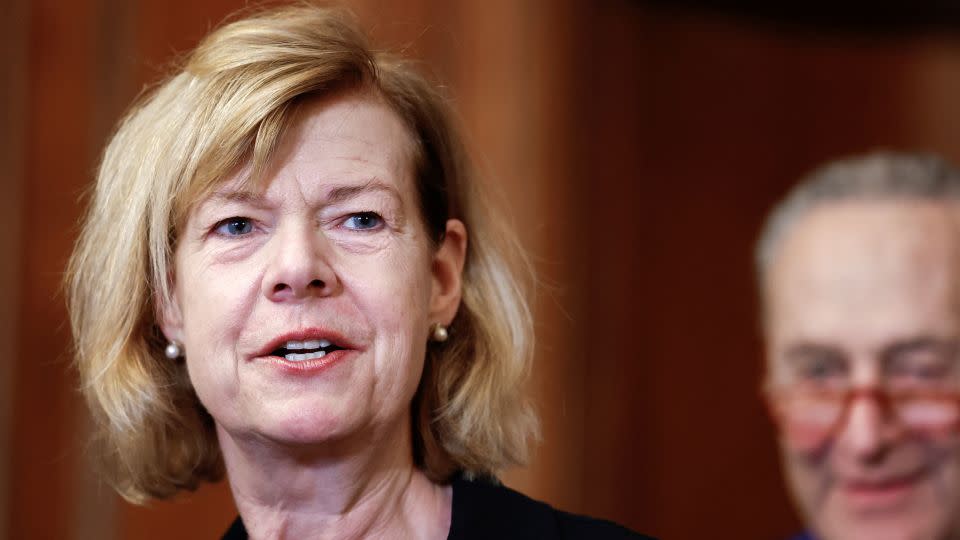
Democratic Sen. Tammy Baldwin finally has a top Republican opponent in Eric Hovde, the CEO of Sunwest Bank, who entered the race in February. Hovde faces only minimal opposition in the August primary and secured Trump’s endorsement at the former president’s Wisconsin rally on Tuesday.
But although he has millions he can throw at a campaign, Hovde hasn’t yet shaken up Wisconsin’s spot on the rankings. He lost a bid for the same seat in 2012, falling in the GOP primary. Since then, he bought a house in Laguna Beach, California – the source of early Democratic attacks trying to tie him to the Golden State. Hovde attempted to prove his Badger State bona fides by sharing video of him shirtless and immersed in a frozen Wisconsin lake in late February. “So the Dems and Sen. Baldwin keep saying I’m not from Wisconsin, which is a complete joke,” Hovde says, before challenging Baldwin to a similar plunge.
Hovde has been running positive spots to introduce himself to voters while trying to put a positive spin on his wealth. In one spot titled “Can’t be Bought,” he promises that if elected, he’ll donate his Senate salary to “Wisconsin charity every year.” Another features his wife touting his “Wisconsin roots.”
Meanwhile, Baldwin, who’s seeking a third term, is trying to play up her bipartisan record. Her first ad features the senator in a hard hat as a worker says, “Tammy Baldwin got President Trump to sign her Made in America bill,” before another adds, “Then, she got President Biden to make it permanent” – a nod to this longtime battleground state, which flipped from Trump to Biden in 2020. A Marquette Law School poll conducted in late January found Baldwin with a 42% favorability rating among registered voters – about the same as Biden’s. (Hovde, who was not yet a candidate, was largely unknown.)
9. Maryland
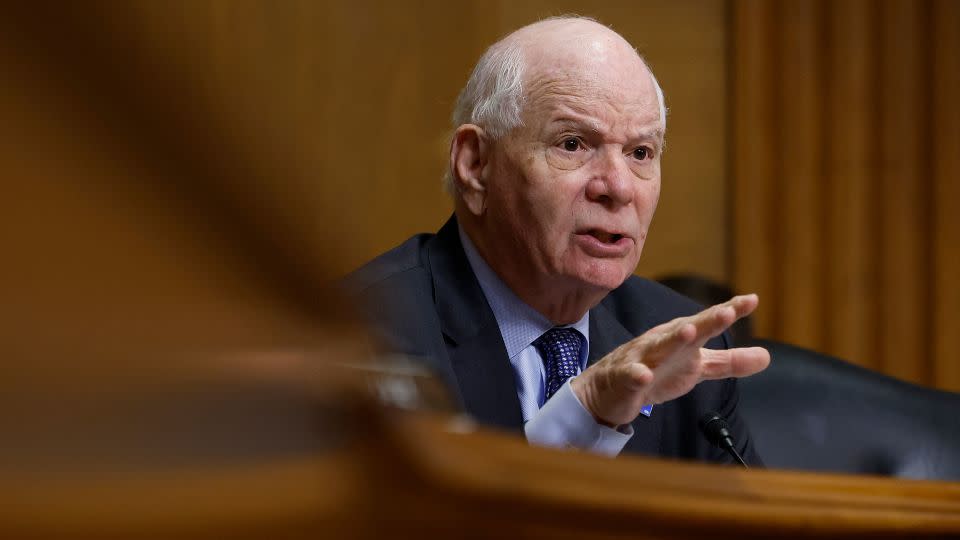
Maryland makes its debut on the rankings following Republican former Gov. Larry Hogan’s entry into the race to succeed retiring Democratic Sen. Ben Cardin. Biden won this state by more than 30 points in 2020 – which is bigger than Trump’s winning margin in both Montana and Ohio. But just as Tester and Brown have a shot at defying the partisanship of their states, Hogan has a chance in Maryland.
The former two-term governor was in a close race with US Rep. David Trone and with Prince George’s County Executive Angela Alsobrooks – his two leading Democratic rivals – in a Goucher College/Baltimore Banner poll conducted in March. The survey found him winning about a quarter of Democrats and more than half of independents in those hypothetical matchups. And he held double-digit leads over both of them in a Washington Post/University of Maryland poll that surveyed registered voters earlier in March.
Still, the Post/UMD poll showed that voters overwhelmingly preferred Democratic control of the Senate (55% to 35%). Democrats’ task, therefore, is to make the case to Marylanders over the coming months that their popular former governor would help enable a GOP Senate majority that most of them would oppose. (Hogan has aided in that argument by not committing to vote for legislation that would codify Roe v. Wade at the federal level.) It’s true that governors, former or current, don’t necessarily make good Senate candidates in states that lean the other way – see Democrats Steve Bullock of Montana, Phil Bredesen of Tennessee and Ted Strickland of Ohio or Republican Linda Lingle of Hawaii. But Hogan won reelection by 12 points in 2018 – a strong Democratic year – suggesting he can at least keep this race competitive.
The May 14 primary will decide whether he faces Trone, whom he led 49% to 37% in the Post/UMD poll, or Alsobrooks, whom he led 50% to 36%. Both Democrats bring advantages to the race. Alsobrooks is a Black woman running in a state where Black turnout is key for Democrats. Trone, the owner and co-founder of Total Wine & More, has massive self-funding capacity – he loaned his 2022 House campaign $12.5 million, more than any other House candidate in the country. Trone led Alsobrooks in both the Goucher and Post polls, but a significant percentage remained undecided ahead of the primary.
10. Texas
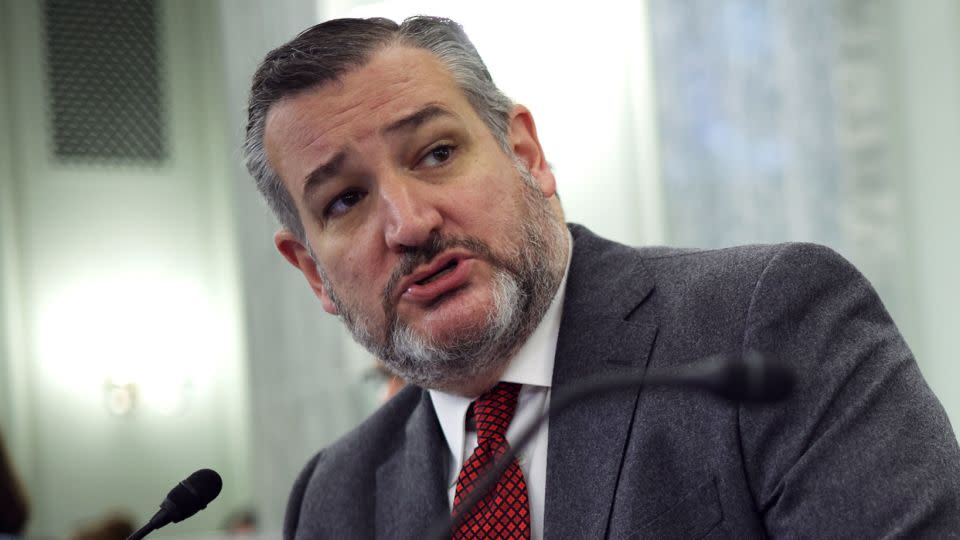
This is the only Republican-held seat on the list. GOP Sen. Ted Cruz has a formidable challenger in Democratic Rep. Colin Allred, who handily won his primary last month, avoiding a runoff. Democrats are confident that the former NFL player, who flipped a Dallas-area House seat in 2018, is better positioned to unseat Cruz than Beto O’Rourke, who came within 3 points of knocking off the senator six years ago.
So far, Allred has proved to be a strong fundraiser who’s adopted the kind of “rights and freedom” messaging that has helped Democrats parlay the abortion issue into success at the ballot box since the fall of Roe v. Wade. “In Texas, we believe in freedom. Keeping government out of our personal lives,” he says in a recent ad criticizing the state’s six-week abortion ban.
Allred’s challenge is that he’s running in what is still a red state, and Republicans are more prepared for the challenge than they were in 2018. (NRSC Chairman Steve Daines has been sending out fundraising emails that claim the race is “statistically tied.”) There’s some indication that Allred is keeping things more competitive than the top of the ticket. He trailed Cruz by 6 points among registered Texas voters in a recent Marist College poll, while Biden trailed Trump by 11 points.
CNN’s David Wright contributed to this report.
For more CNN news and newsletters create an account at CNN.com
